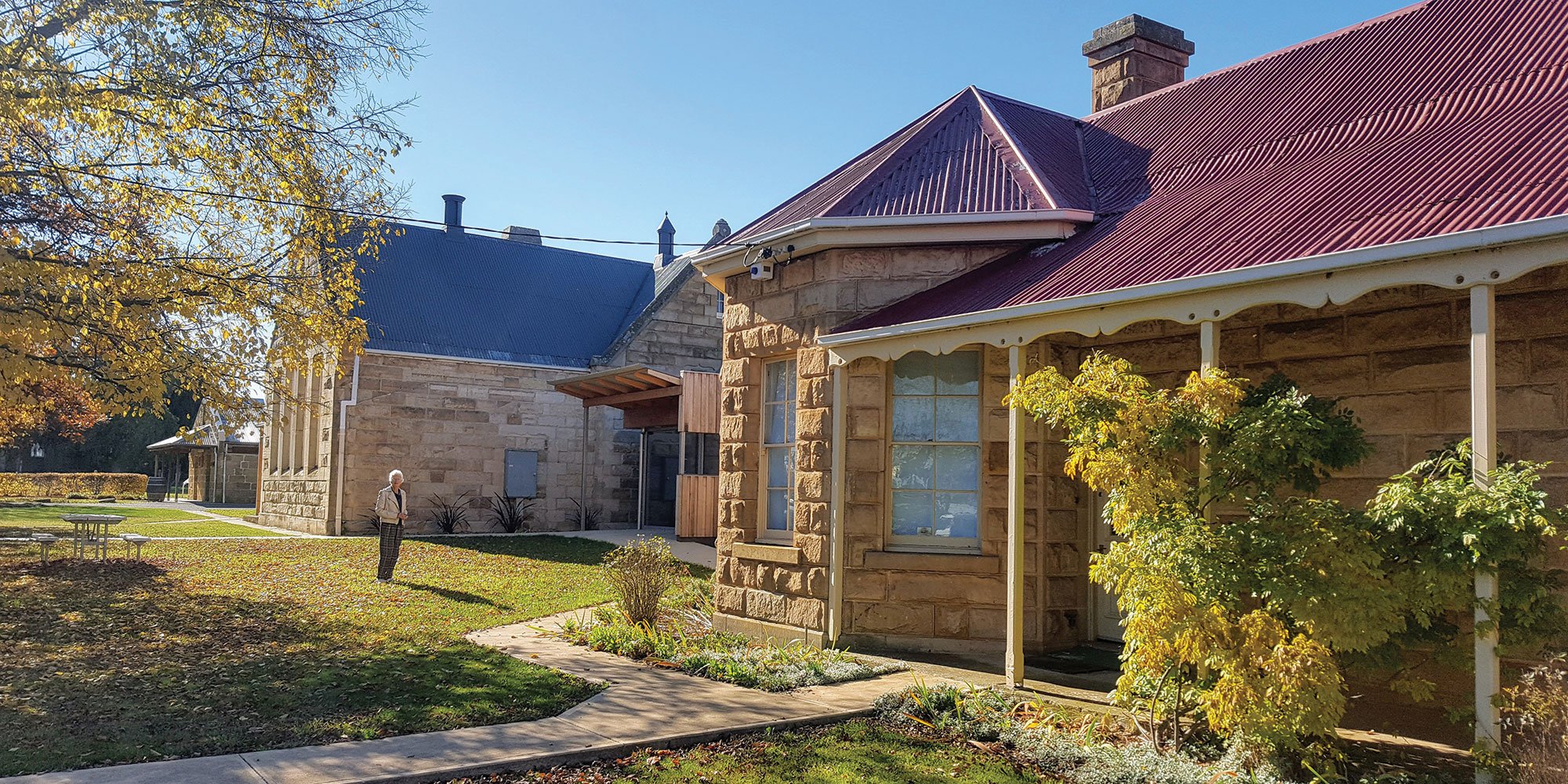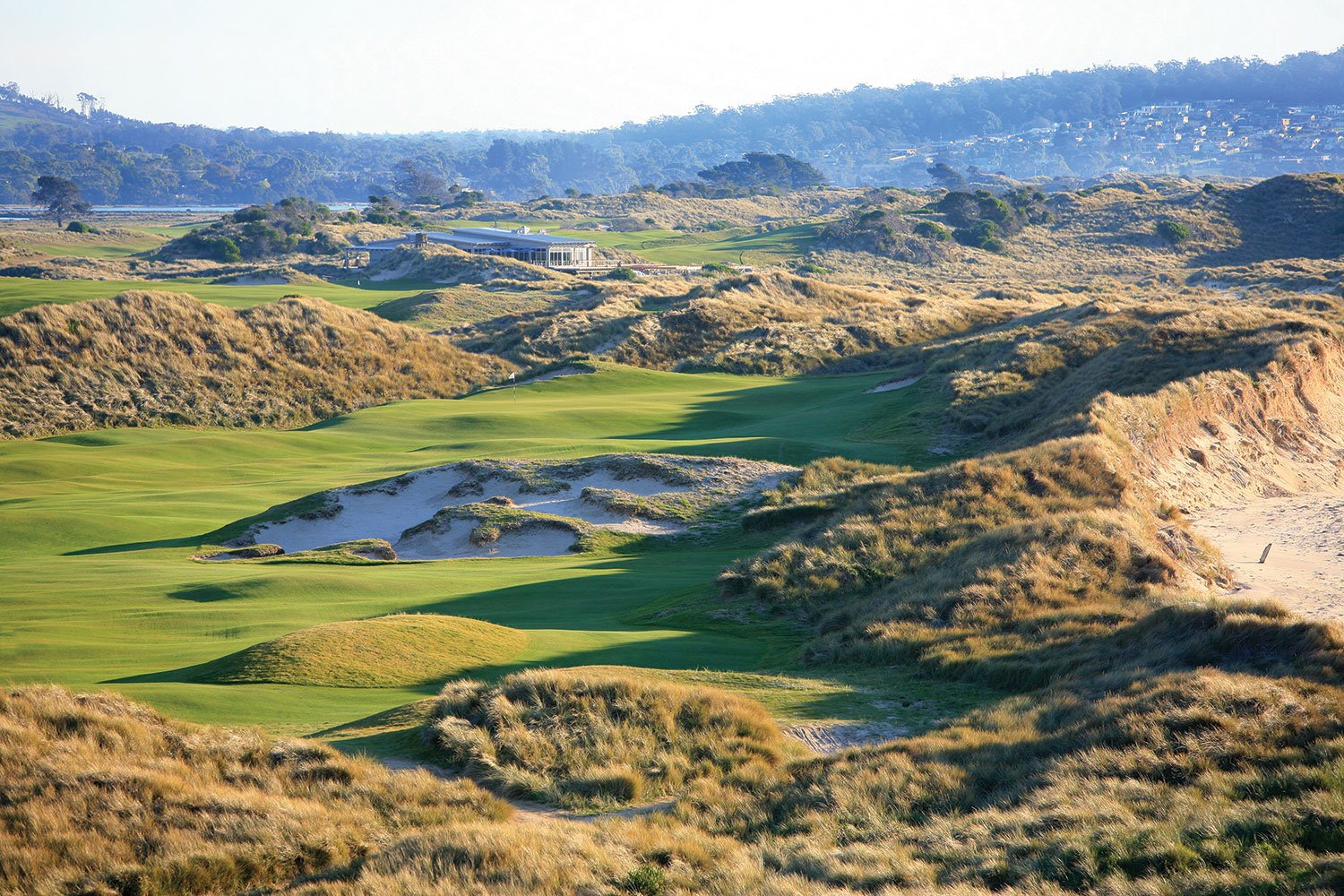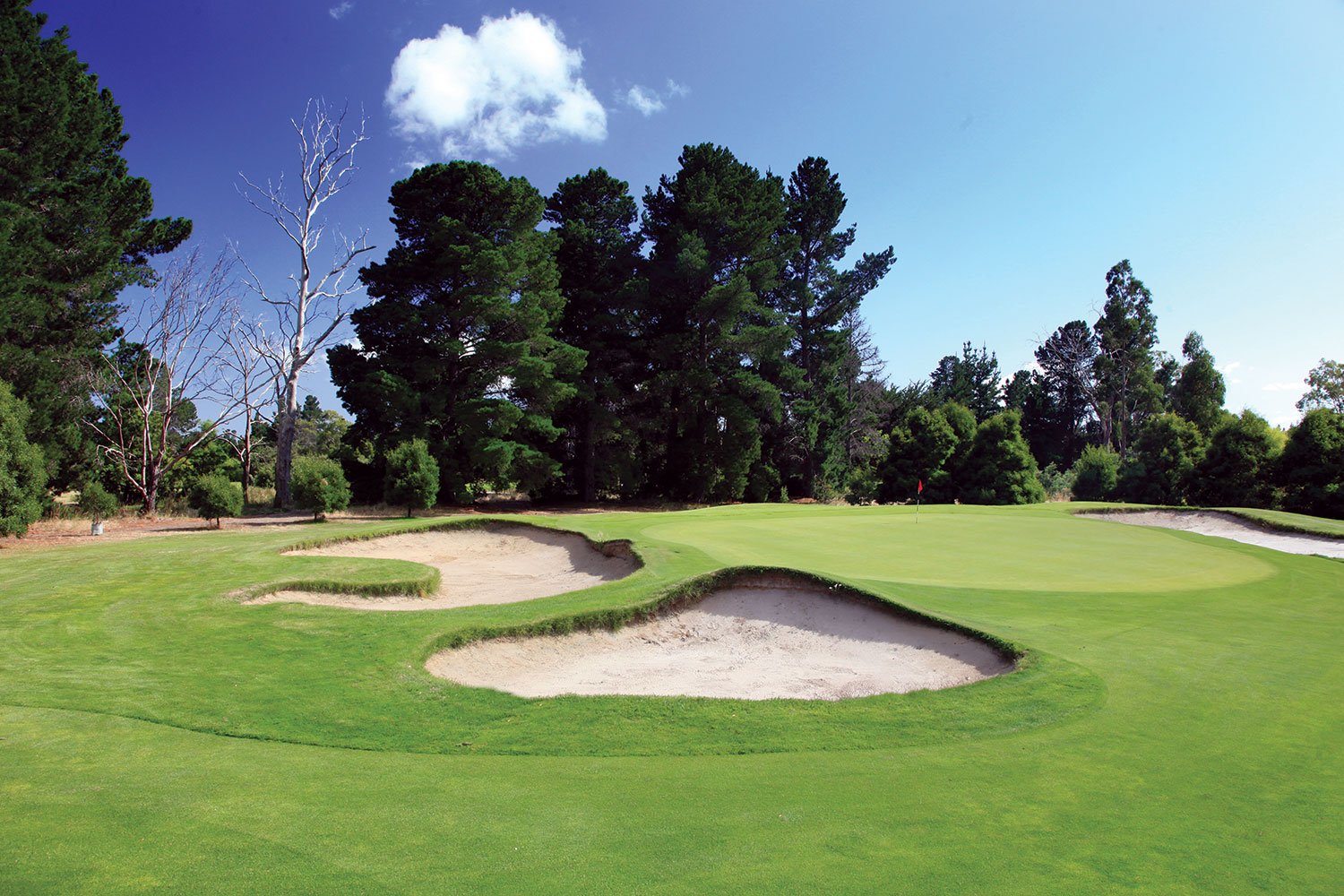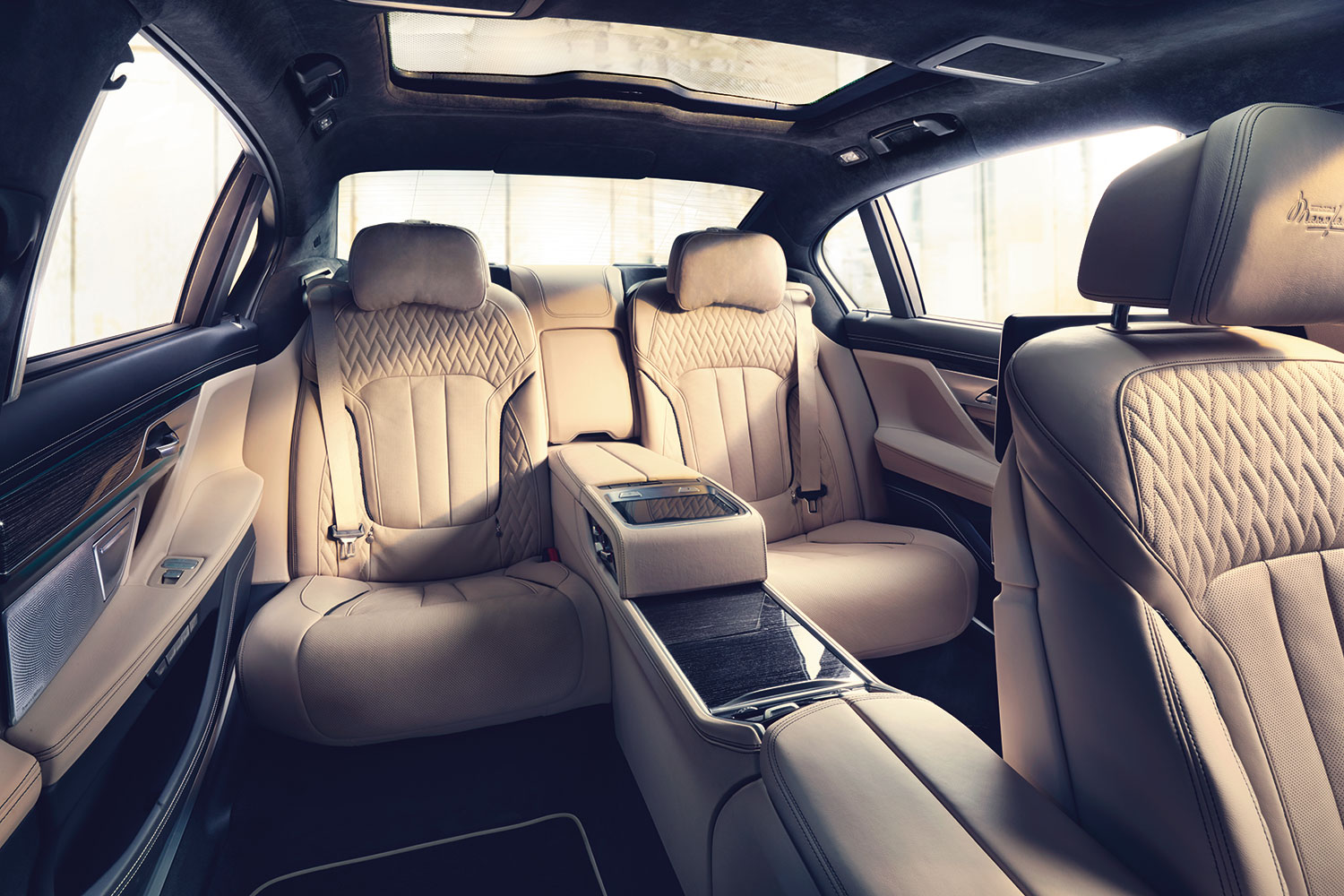NO OTHER state in Australia has witnessed an evolution in its golf landscape since the turn of the millennium quite like Tasmania. The momentum that began with the emergence of the original Barnbougle course 13 years ago has gathered and spread. What was previously farmland or fallow ground now draws golfers from around the globe because tee markers and flagsticks were placed in strategic locations. The evolution from merely ground to great golf was more intricate than that, of course, but not overly so.
Indeed, it’s the naturalness of the recent additions to the golf scene of our most natural state that is the peak attraction. No course opened in Tasmania since 2000 looks in any way contrived, so much so that the terrain upon which these fine links now reside looks like it could have been home to golf courses since time began.
Haven’t checked it out for yourself yet? You should. And when you do, use this checklist of must-dos as a guide. You won’t regret it.
1. Get blown around on King Island
The best golf destinations require a little effort to reach, but that’s half the fun. Like Nova Scotia in far eastern Canada or Bandon in the US state of Oregon, King Island is about as remote as the game gets. In some ways a mere rock in the ocean, King Island is as capricious a site as we have in Australia, buffeted by winds that on some days won’t just blow the proverbial dog off the chain, they’ll send Fido into the middle of next week. With no other land to the west on the same latitude until you strike Argentina, there are literally thousands of kilometres for the wind to gather steam before striking this exposed lump in Bass Strait. Yes, there is the potential for golf to be near unplayable on the island, but those behind the two new courses forecast 300 days of playable conditions per year. We’ll take those odds. And besides, the game began in places like this. Just rug up and play on.

2. Salivate at the prospect of Arm End
The curves and contours of Hobart are shapely and artistic, as if God treated the Tasmanian capital as some sort of 3D canvas. Sticking into the River Derwent like a giant outstretched index finger is the South Arm peninsula, which extends north to the site of Tasmania’s next great golf location: Arm End. The 116-hectare site will offer captivating views and golf to match, with the proposed routing of the Neil Crafter/Paul Mogford-designed course taking in the most appealing points on the peninsula. Not that golfers will get the place all to themselves. Part of the broader project includes walking and cycling paths – naturally at a safe distance from the fairways – to allow those poor souls yet to discover golf the chance to enjoy the place in a different capacity. Located close to the Hobart CBD as the crow flies, Arm End is a solid 45-minute drive around the Derwent’s snaking edges. As such, golfers will be able to arrive at Arm End via a ferry service from Salamanca. The course could open as soon as 2018 or 2019.
3. Tackle Tasmania Golf Club’s captivating third hole
It warrants saying first up: Tasmania Golf Club is no one-trick pony. There’s plenty to enjoy along the two holes before and the 15 after the par-5 third hole. But there’s no question, the dogleg-left three-shotter that turns along the edge of Barilla Bay is the 15 minutes within any round that lingers in memory the longest. The hole asks for a powerful right-to-left shot from the tee as it turns almost 90 degrees before trundling along towards the green. Whether you make 3 or 7, it’s a gem.
4. Dine at Mures
The waterfront portion of Hobart is a terrific place to while away a few hours, exploring the markets, distilleries and more. Whatever you do, don’t miss out on a meal at Mures, a “hook to plate” seafood restaurant that dominates the docklands dining sector. Mures incorporates a 76-foot long lining vessel, Diana, a processing factory and a range of gourmet seafood products. Whether you dine on the Upper or Lower deck, it’s a can’t-miss experience.

5. Reflect upon Tassie’s lone Australian Open
Mention the figure “1971” around Royal Hobart Golf Club and nothing further need be said to know you’re referring to the one and only time the Apple Isle staged our national championship. Jack Nicklaus captured the title, whipping by eight strokes a field that included Gary Player, Peter Thomson, Bruce Crampton, Dave Stockton, Peter Oosterhuis and more. It’s something of an indictment on the championship that it had never ventured across Bass Strait before or has again since. Today, Royal Hobart is preparing itself for an exciting full-scale renovation of the course and facilities to restore its considerable glory and upgrade the practice facilities. Watch this space.
6. Sample MONA
I heard people in Hobart talk about MONA without knowing a thing about what they meant. Until I found my way to the Museum of Old and New Art, that is. Located on the river north of the CBD and accessible by road or ferry, MONA is a conglomeration of art, music, food, shopping and fun. It’s worth allocating at least half a day to wander round and soak in all the exhibitions and attractions. MONA is open every day of the week except Tuesdays.
![No.8: Ratho Farm is a slice of Australian golf history, and the course [right] is loads of fun.](http://australiangolfdigest.com.au/wp-content/uploads/2017/09/Tasmania_03.jpg)
7. Explore the Australasian Golf Museum at Bothwell
Here’s yet another place where several hours could slide away without you noticing (or caring). Lovingly looked after and full of interesting items and collections from the rich history of golf here, the museum should be on the touring itinerary of every Australian golfer at least once in their life. The museum recently doubled its size and expanded the displays into the adjoining convict cottage, so there’s no chance of anyone walking right through and not learning something new about the rich tapestry of the sport in our country.
8. Get back to our golf roots at Ratho
Just down the road from the museum is Ratho Farm, long regarded as Australia’s oldest golf course. You may (and should) play the course with hickory clubs, opening and closing the various farm gates between holes as your mind harks back to the 1800s when golf was first played there. Six ‘lost’ holes have been restored in recent years based on maps, photographs and scorecards. For those seeking an overnight stay, Ratho’s character accommodation consists of several old farm buildings – a bakery, cookhouse, granary loft, stables and more – lovingly restored into boutique rooms equipped with modern features while retaining elements of the original masonry and carpentry. Along with the Australasian Golf Museum, Ratho makes for a quintessential double act. Or a treble … Just a few hundred metres up the Clyde River from the 16th green is Nant Distillery for golfers who revel in a post-round tipple.
9. Touch at least one of the ‘side’ coasts
The best golf in Tasmania lies to the north or the south of the state, but the other edges need not be ignored. Whether it’s the east, with stunning Wineglass Bay, or the west, and Franklin-Gordon Wild Rivers National Park, Tasmania’s flanking coastlines offer plenty to see. And for the hard-core golfers, the journey between Tassie’s top and bottom is a chance to rest the legs and instead let the eyes take over.

10. Par the last two holes at Barnbougle Dunes
I’m not interested in how you play the first 16 holes at the original Barnbougle course – although kudos to anyone who hits the green on the diabolical little seventh hole – but I am in awe of anyone who can finish par-par on the long, usually-into-the-wind closing par 4s at 17 and 18. I’d suggest matching or bettering par on those two deserves a special reward, and there is precedent around such incentives. Barnbougle owner Richard Sattler tells a story about Hawthorn Football Club, which has strong ties to Tasmania. The team was playing in Launceston the week before a bye and Sattler promised them free rein in his impressive wine cellar if key forward Jack Gunston could kick four goals. Well, he kicked five … in the last quarter. Rumour has it the other players were finding ways to get the ball to Gunston. Bemused, Sattler didn’t allow the players full access to his collection but did put a three-litre double magnum of red on their table.
11. Take the ‘Scotty’ line from the fifth tee at Lost Farm
Rumour has it Adam Scott almost drove the green of the 443-metre par 4 by taking an outrageous line right of the huge dune and swooping a huge draw on the wind that bounded and skipped up near the putting surface. Once you see the fifth hole at Lost Farm, you’ll marvel at such a feat, even if you work out that the distance is measured to rather than through the point of the dogleg. Mortal golfers need to hit a dinky little slice around the dune and then rip a long iron or hybrid onto the green, but – even if it costs you a ball – have just one crack at Scott’s audacious line in order to feel even a small sense of the majesty of such a bold play.

12. Take to the skies
Moving between the mainland, Tasmania’s north coast and King Island requires plenty of logistical savvy. In a sequence of stops dubbed ‘the Bass Strait Golf Triangle’, travelling golfers can cover the three legs with ease. Bass Strait Golf is a leading provider of private charters and packages to the four world-class courses of the Triangle: Barnbougle Dunes, Barnbougle Lost Farm, Cape Wickham and Ocean Dunes. With more than 35 years’ aviation experience, Bass Strait Golf offers all-inclusive golf, accommodation and transfer packages. The plusses for golfers travelling this way are significant. Firstly there’s the ability to travel with your own clubs, then there’s avoiding queues and the prospect of missing flights or paying for parking at the airport of origin. It’s a fast, efficient and enjoyable way to hop between Tasmania’s leading courses. Two-day packages to and from Melbourne’s Moorabbin Airport vary between $1,050 for 10 passengers and $1,480 for four. And if time doesn’t allow you to cover all three points of the Triangle in one trip, this winter Rex Airlines has been offering fares to King Island from Melbourne for $89, one way. Even once September begins, the fare is a more than reasonable $299 return.
13. Stay out of Victoria Cove at Cape Wickham’s 18th (unless it’s for a post-round dip)
Up at Cape Wickham, on the northern tip of King Island, there are some genuinely classic golf holes on land to match. One of its great attributes is how the holes away from the postcard-material coastline are among the best, architecturally. But the finishing hole is a true gem. Set along a flattish, crescent-shaped shelf of land below the clubhouse, the 18th doglegs right around an inlet in the coast known as Victoria Cove. The lapping waves and sandy strip are difficult to ignore standing on the tee – and astute eyes will spot the two sets of stairs to help golfers get down to the beach below. That’s right, the beach is in play. A ball that blows offline and winds up on the sand does not require a re-tee and adventurous players can climb down and hit back up without penalty.

14. Decipher the second green at Ocean Dunes
This might be one of the coolest shots in Australian golf. For dramatic flair, the 280-metre par 4 runs alongside the coastline, but the real showstopper is the green complex. Potentially hidden from view for even a 50-metre pitch shot, the split-level putting surface is high on the left side and low on the right and is a sliver of a target set between opposing dunes short and long. Only a cavalier tee shot down the right side will yield a decent view for the second shot; anything in the centre or left of the fairway requires the imagination to be set to full-bore then a nifty pitch that carries the first dune and falls short of the one behind. The contours will help gather balls onto the surface, providing they don’t find the shaggy dune grass or bunkers beyond. Full marks to Ocean Dunes’ designer Graeme Grant for conceiving a green unlike anything else you’re ever likely to see.
15. Decide between Boag’s and Cascade
Beer is a distinctly north vs south thing in Tasmania, with northerners favouring Boag’s and southerners Cascade. As a tourist, you get to make up your own mind which side of this ‘Mason-Dixon beer divide’ you fall into.
16. Treat Launceston as more than just an airport
The emergence of the Barnbougle duo at Bridport, an hour-and-a-bit’s drive north-east of Launceston, has rendered the golf courses of Tasmania’s second-largest city into something of a supporting role. Truth be told, the city’s golf offerings are worth sampling before you skip town for the coast. A great warm-up or warm-down option at the top or tail of a trip is Launceston Golf Club. Verdant, undulating and interesting, the layout wends its way through corridors of trees that define the targets in most instances. A gradual replacement program is fortifying the green complexes, making the golf course as appealing an itinerary addition as ever.

17. Enjoy the ultimate boys’ (or girls’) weekend away at Country Club Tasmania
Across town, Country Club Tasmania is another stop well worth making while in Launceston. It’s the ultimate one-stop shop, with an 18-hole course beside a luxurious resort that includes lavish accommodation, restaurants, live entertainment, a casino, tennis, squash, horse riding and more. This destination-in-one is a great location for golf weekends, group getaways, a romantic escape or a gathering place for all-male or all-female parties. The golf course is an underrated layout where the wind can play as much of a part in compiling a sound score as the trees, sand and water. The pick of the holes is the par-5 fourth, which bends hard right around a lake that can be carried from the tee by brave golfers. One hole earlier, pause for a moment before you strike a blow on the third hole and reflect upon the time an A-grade member at Country Club contrived to run up a 16 at the water-lined par 3 during the club championships – and still shot 84! An easy drive from town and the airport, Country Club Tasmania serves as an ideal starting or finishing point to a Tassie tour.
18. Book your return trip
It almost goes without saying that once you’ve sampled a taste of all Tasmania possesses for golf and beyond, one trip simply isn’t enough.
How To Make It Happen
Getting to and across the various pockets of Tasmania can sound like a logistical and expensive nightmare for mainland residents. But it needn’t be.
If he could debunk one myth about travelling to the Apple Isle, that would be the one for Mike Sidgreaves, the managing director of Exclusive Sports Tours.
“When it comes to private golf holidays, with Tassie being one of the most popular domestic destinations, the thing that we need to educate people on is that using golf tour operators like us doesn’t actually have to cost any more as we only charge the same rates as available online and elsewhere, generating our revenue from commissions from airlines, hotels, golf clubs, etc,” Sidgreaves says. “Our very regular feedback from people (90-plus percent) is that they didn’t know this and thought it would be cheaper to book it themselves.
“In addition to it costing no more for us to do all the work for them, we obviously have significant experience and knowledge of most golf destinations, from the best places to stay and play, to the best places to eat and drink, etc. If people haven’t travelled to a destination themselves regularly, they are unlikely to have the personal knowledge to make the most out of a trip.”
Exclusive Sports Tours offers six different package options, two each of differing durations to the Barnbougle courses only, King Island only and a combination of the two. Pairing both destinations, for instance, can be done for $538 per person, twin share and without transport, or $1,329 per person, twin share with flights from and back to Melbourne’s Moorabbin Airport and between the two golf locations (two nights, three games of golf).
Phone (02) 9555 5195 or visit www.exclusivesports.com.au for more details.
The new BMW M760Li xDrive
This is the perfect vehicle to travel across Tasmania. Sporting a 6.6-litre M Performance TwinPower Turbo V12 engine, the BMW M760Li xDrive delivers a powerful drive. Producing 448 kW, it races to 100km/h in just 3.7 seconds, significantly reducing the size of the island state.
But power isn’t everything. After 18 holes you need a place to relax, not a race car. The flagship model of the range goes beyond everyday comfort, into a place of ultimate luxury. The rear seats feature massage and  heating settings designed for ultimate comfort, relaxation, vitalisation and physical wellbeing – the ideal preparation for your next round. Of course your clubs will travel in luxury and comfort too, in a 515-litre boot.
heating settings designed for ultimate comfort, relaxation, vitalisation and physical wellbeing – the ideal preparation for your next round. Of course your clubs will travel in luxury and comfort too, in a 515-litre boot.
Equipped with BMW xDrive technology, four-wheel drive and four-wheel steering ensures its vast power is deployed with precision, moving its imposing size with remarkable agility. Engage Sport Plus mode and the engine, steering, suspension and gearbox all sharpen up. Executive Drive Pro senses bumps and dips in the road to ensure the smoothest possible ride. Its only downfall? You’re bound to miss some golf; this is a seriously captivating car that will urge you to drive that little bit further.





